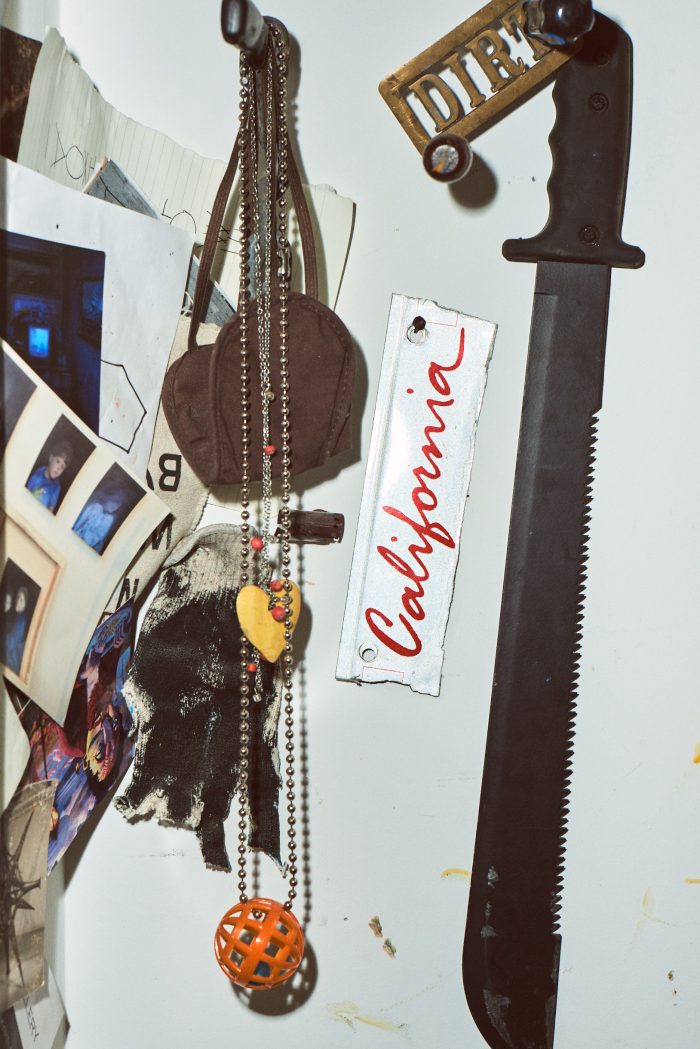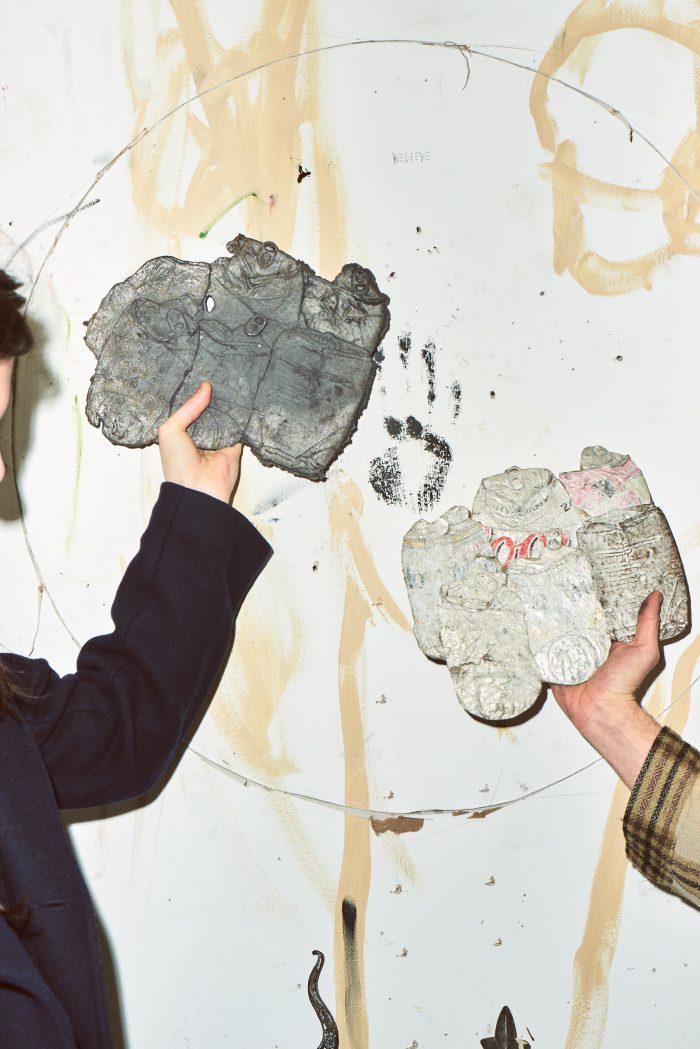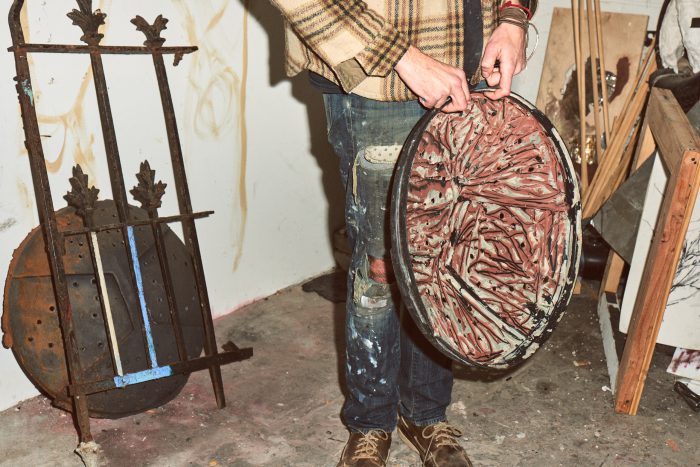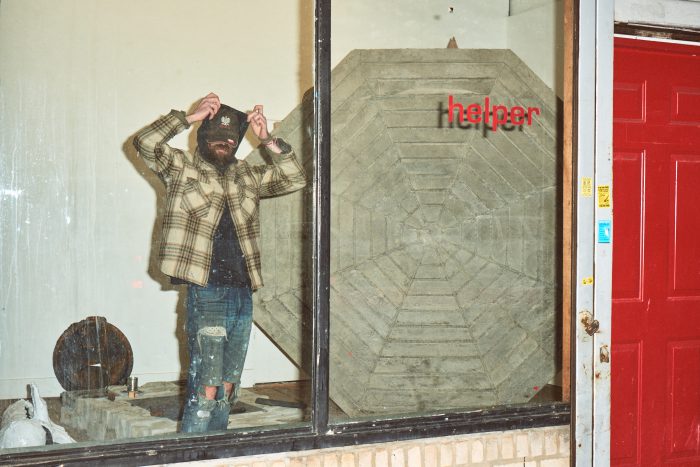
On a visit to Tom Koehler’s studio, the artist jokingly refers to his space, as the “war room.” He doesn’t mean a subterranean boardroom filled with suits. The tight industrial space is packed with Koehler’s discarded found and won treasures in addition to several large canvases.

I find that half of the debris looks more or less lethal. There are knives, axes, stakes, and I suppose the oil paint fumes, the slow burn. Koehler looks at home amongst it. He speaks gruffly and is just left of outright shy.
As we start unpacking the room literally and metaphorically, I begin to see the method to the madness. Koehler is interested in the way materiality carries meaning. He picks up what appears to be flattened beers from the ground and places it in my hands–it feels like two tons. He then picks up the original: Coors. Mine is made of iron. “The found objects are source of inspiration, but I don’t usually leave them as is,” Koehler says. “I was keeping cans around the studio and this form finally clicked. It was my way out.”

The next object he picks up is a trash can lid which the artist used the foundation for a more experimental mold. The manipulation transforms the passive object into a cast iron shield. “I walked by it a thousand times before I picked it up,” he says. “It had these hearts drawn on it, so I thought it was always kind of romantic.” 
Our tour continues with a field-trip to his show at Helper where he erected what appeared to be a concrete spider web. “It’s a gazebo,” Koehler says.

In the show there is a floor piece with rearrangeable parts. Visitors are invited to step on it and move the objects around. The work brings to mind Carl Andre’s cold squares gone goth. This is Koehler’s vision: a world defined tactility and structure.











 in your life?
in your life?

